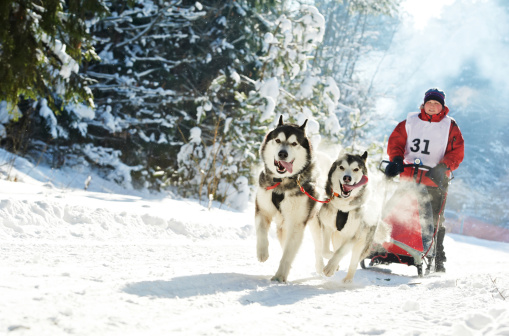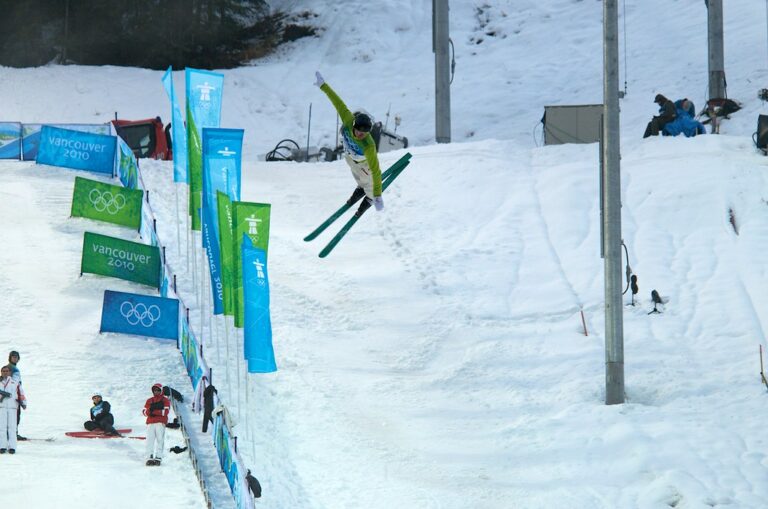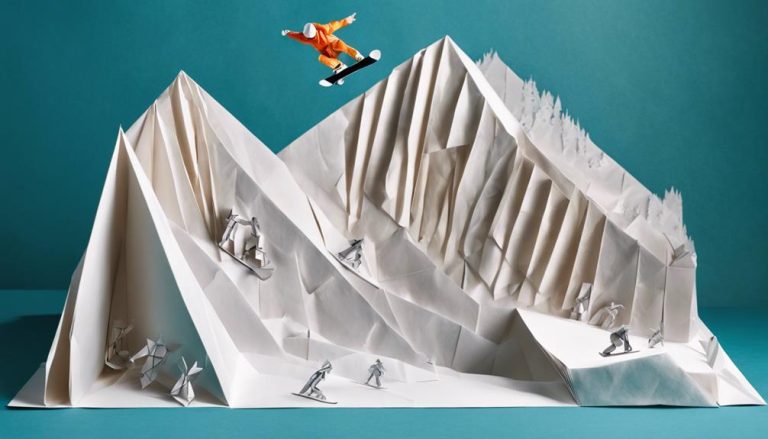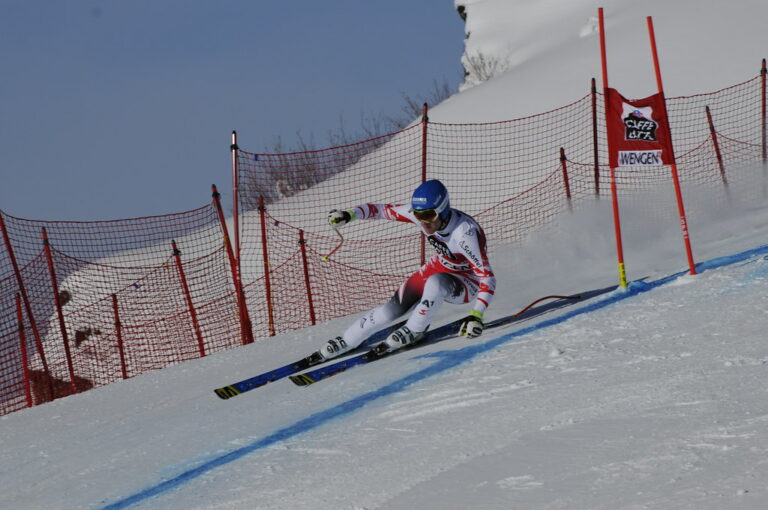General Rules of Ski Orienteering
Are you aware of the intricate details that govern ski orienteering competitions? From equipment requirements to protest procedures, there is a multitude of factors to consider when participating in this challenging sport. Understanding the general rules is crucial for all competitors, ensuring fair play and adherence to the established guidelines. As you navigate the snowy terrain in search of checkpoints, knowing these rules will not only enhance your performance but also contribute to the overall integrity of the competition.
Equipment Requirements
When participating in ski orienteering, you must ensure that your equipment meets specific requirements to navigate the terrain effectively. Gear maintenance is crucial for optimal performance. Check your skis for any damages and ensure your bindings are secure. Properly waxed skis will glide smoothly, improving your speed and efficiency on the snow. Additionally, make sure your poles are the correct length for your height to assist with propulsion and balance.
Clothing requirements are equally important. Dressing in layers is key for regulating body temperature during the race. A moisture-wicking base layer will keep sweat away from your skin, while a thermal mid-layer provides insulation. Your outer layer should be waterproof and windproof to protect you from the elements. Don't forget a hat, gloves, and goggles to shield your extremities and eyes from the cold.
Participant Categories
To fully understand the dynamics of ski orienteering, it is essential to grasp the various participant categories that exist within this exhilarating sport. Participant categories in ski orienteering typically encompass a range of age groups and skill levels. This structure ensures that competitors are pitted against others of similar abilities and experiences, creating a fair and competitive environment for all involved.
Additionally, gender divisions play a role in participant categories, allowing male and female athletes to compete separately or together, depending on the event. This ensures that everyone has the opportunity to showcase their skills and abilities on an equal playing field.
Team categories are another aspect of participant classification in ski orienteering. Competitors can choose to participate individually or as part of a team, adding a layer of teamwork and camaraderie to the sport. Team events can be particularly exciting, as members work together to navigate the course and achieve their goals.
Understanding these participant categories is crucial for anyone looking to engage in ski orienteering, as it helps in selecting the right events and categories that align with individual preferences and abilities.
Course Navigation Basics
Ready to elevate your ski orienteering game? Let's talk about the essential skills: map reading and route planning. These two points are fundamental to mastering the art of course navigation.
Map Reading Skills
Enhance your ski orienteering experience by mastering essential map reading skills for course navigation. Start by honing your compass accuracy to align with terrain features. Understanding how to interpret the map in relation to the landscape will help you navigate efficiently. Utilize pace counting to track distance traveled, especially in areas where visibility is limited. Keep an eye out for trail markers that indicate key points along the route. Familiarize yourself with different types of symbols on the map to quickly identify landmarks. By developing these map reading skills, you'll navigate ski orienteering courses with confidence and precision. Stay focused, trust your abilities, and enjoy the freedom that comes with mastering the art of map reading in ski orienteering.
Route Planning Techniques
As you embark on mastering ski orienteering, understanding effective route planning techniques is crucial for navigating courses with accuracy and efficiency. To enhance your skills, consider the following:
- Terrain analysis: Study the map for elevation changes, vegetation density, and other land features to determine the fastest and safest routes.
- Weather considerations: Take into account weather conditions like wind direction, snow quality, and visibility, as these factors can impact your route choice.
- Plan ahead: Anticipate upcoming control points and strategize the best sequence to minimize unnecessary detours.
- Backup routes: Always have alternative routes in mind in case unexpected obstacles or changes in terrain force you to adjust your initial plan.
Time Penalties and Disqualifications
When it comes to ski orienteering, understanding the rules regarding time penalties and disqualifications is crucial for a fair and competitive event. Time penalties are incurred when a participant fails to reach checkpoints within the specified time limit. These penalties are essential to maintain the integrity of the competition and ensure that all participants adhere to the same standards. Disqualification criteria may include missing mandatory checkpoints, using unauthorized equipment, or not following the designated course. It's important to familiarize yourself with the disqualification rules to avoid any unintentional violations that could result in being disqualified from the race.
To prevent time penalties and disqualifications, make sure to plan your route carefully, double-check your equipment, and stay within the designated boundaries. Understanding the consequences of not meeting the required guidelines will help you stay on track and compete fairly. Remember, ski orienteering is not just about speed but also about precision and adherence to the rules. By following the regulations regarding time penalties and disqualifications, you contribute to creating a level playing field for all participants.
Start and Finish Procedures
Curious about how to navigate the start and finish procedures of a ski orienteering event effortlessly? Here are some key points to keep in mind:
- Timing Chip: When you arrive at the start line, make sure to collect your timing chip. This chip is essential for recording your time throughout the race. Attach it securely to your clothing or gear to ensure accurate timing.
- Race Officials: Before starting, check-in with the race officials. They will provide you with any last-minute instructions and ensure that you are ready to begin. Respect their guidance and follow any rules or regulations they communicate.
- Starting Procedure: Listen carefully to the starting official for your cue to begin. Stay composed and focused as you set off on the course. Remember, the clock starts ticking as soon as you cross the start line.
- Finish Line: As you approach the finish line, give it your all. Your timing chip will record your finish time. Once you cross the finish line, return the chip to the race officials to finalize your race time. Celebrate your accomplishment!
Control Point Protocol
Navigating the control point protocol in ski orienteering requires precision and swift decision-making to successfully complete the course. To excel, you must master time management and hone your observation skills. Time management is crucial as each control point has a designated time window for you to reach it. Observing the terrain and map details carefully can guide you efficiently to each checkpoint.
Here's a helpful table to illustrate the key aspects of the control point protocol:
| Control Point Protocol | Importance |
|---|---|
| Time Management | Critical for success |
| Observation Skills | Navigate accurately |
| Decision-making | Swift and precise |
Effective time management ensures you reach each checkpoint within the allocated time, avoiding penalties. Observation skills help you identify the best route to each control point swiftly. Make quick decisions based on the information gathered to optimize your performance. Mastering these aspects will enhance your ski orienteering experience.
Safety Guidelines on the Course
Before embarking on your ski orienteering adventure, it's crucial to be aware of the course boundaries, ensuring you stay within the designated area for your safety. Additionally, always have emergency contact information readily available in case of unforeseen circumstances. Don't forget to perform gear safety checks before hitting the course to guarantee your equipment is in optimal condition for a smooth and secure experience.
Course Boundary Awareness
Ensuring your awareness of the course boundaries is crucial for your safety and success in ski orienteering. Here are some safety guidelines to help you stay on track:
- Boundary marking: Pay attention to any flags, signs, or natural markers that indicate the course boundaries.
- Stay within boundaries: Avoid straying off the designated course to prevent getting lost or entering unsafe areas.
- Respect private property: Be mindful of boundaries that mark private property and avoid trespassing.
- Plan your route: Before starting, study the course map to familiarize yourself with the boundaries and key checkpoints.
Emergency Contact Information
In case of an emergency during your ski orienteering course, it is essential to have readily accessible contact information for assistance. Before hitting the trails, ensure you have emergency contact numbers stored in your phone or written down. Include any pertinent medical information that rescue teams should know. This vital step can save precious time in case of an accident or injury. Make sure your emergency contacts are aware of your planned route and estimated return time. It's also wise to carry a small card with this information in your pocket or backpack. Remember, being prepared with proper emergency contact and medical information adds an extra layer of safety to your ski orienteering adventure.
Gear Safety Checks
Regularly checking your gear for safety is crucial before embarking on a ski orienteering course. Ensuring that your equipment is in top condition can make a significant difference in your overall experience. Here are some essential gear safety checks to keep in mind:
- Bindings: Verify that your bindings are secure and functioning correctly to prevent accidents on the course.
- Poles: Check for any cracks or damages in your ski poles, as they are crucial for balance and propulsion.
- Boots: Inspect your boots for proper fit and any signs of wear that could affect your performance while skiing.
- Emergency Kit: Always carry an emergency kit with essentials like a first aid kit, a map, a compass, and extra food and water, in case of unforeseen circumstances on the course.
Prohibited Actions During Competition
To maintain fairness and uphold the integrity of ski orienteering competitions, certain actions are strictly prohibited during the events. Spectator behavior plays a crucial role in maintaining a respectful environment. It is essential for spectators to refrain from providing any form of assistance or guidance to competitors during the race, ensuring that the competition remains fair and unbiased. Competitor etiquette is equally important, and actions like intentionally obstructing opponents or tampering with course markers are strictly forbidden.
Course condition and weather impact are other key factors. Competitors must not alter the course in any way, such as moving control markers or creating new tracks, as this could provide an unfair advantage. Adhering to the designated course is vital to ensure a level playing field for all participants. Additionally, respecting the impact of weather on the competition is crucial. Competitors should not attempt to manipulate the weather conditions to gain an edge over others, as this goes against the spirit of fair play in ski orienteering. By adhering to these prohibitions, the essence of the sport is preserved, and the competition remains a true test of skill and strategy.
Protest Procedures and Appeals
As you navigate through the rules and regulations of ski orienteering, understanding the protest procedures and appeals process is crucial for maintaining fairness and addressing any disputes that may arise during competitions. When it comes to protests and appeals in ski orienteering, here are some key points to keep in mind:
- Protest Resolution: If you have a concern about a potential rule violation or other issue during a ski orienteering event, you have the right to submit a protest. Make sure to follow the designated procedure for lodging a protest promptly.
- Appeal Process: After a protest is submitted and a decision is made, there may be an option to appeal the decision if you believe it was not handled correctly. Understanding the steps involved in the appeal process is essential.
- Fair Play: Upholding fair play is fundamental in ski orienteering. Respect your fellow competitors and officials, and always strive to compete with integrity and honesty.
- Sportsmanship: Displaying good sportsmanship is key in ski orienteering. Whether you win or lose, always show respect for others and the sport itself.
Awards and Recognition
Achieving excellence in ski orienteering often culminates in the presentation of prestigious awards and recognition to outstanding participants. Event logistics and venue selection play a crucial role in determining the success of a ski orienteering competition. The choice of venue can greatly impact the overall experience for both participants and spectators, influencing the level of competition and the excitement surrounding the event.
Media coverage and sponsorships are also essential aspects when it comes to awards and recognition in ski orienteering. Extensive media coverage can help promote the sport, attract more participants, and secure sponsorships to fund prizes and awards for winners. Sponsors play a key role in providing financial support, equipment, and other resources that contribute to the success of ski orienteering competitions.
Frequently Asked Questions
Can Participants Use GPS Devices or Other Electronic Navigation Aids During a Ski Orienteering Competition?
Yes, you can use GPS devices or electronic aids during a ski orienteering competition. However, it's essential to ensure fair competition by following the rules governing their use. Technology can enhance your experience while maintaining fairness.
Is There a Limit to the Number of Times a Participant Can Visit a Control Point During a Race?
During a race, you can visit each control point only once. This rule adds a strategic element to your route planning. Make each visit count by mapping out the most efficient path to maximize your performance.
Are There Any Specific Rules Regarding the Type of Clothing or Gear That Participants Must Wear During a Ski Orienteering Event?
When hitting the slopes for ski orienteering, you're free to choose your style! Ski suit requirements are flexible, letting you showcase your unique flair. Equipment regulations ensure safety, but beyond that, express yourself on the snow!
How Are Tiebreakers Determined in the Event of Multiple Participants Finishing With the Same Time?
Ever wondered how tiebreaker rules work in ski orienteering? When multiple participants finish with the same time, tiebreakers consider factors like control accuracy or the order of punching controls to ensure fair play.
Are There Any Restrictions on the Use of Drones or Other Aerial Devices to Assist in Navigation During a Ski Orienteering Competition?
When it comes to ski orienteering competitions, it's important to note that there are restrictions on the use of drones or other aerial devices to assist in navigation. Regulations aim to maintain fairness and integrity.






